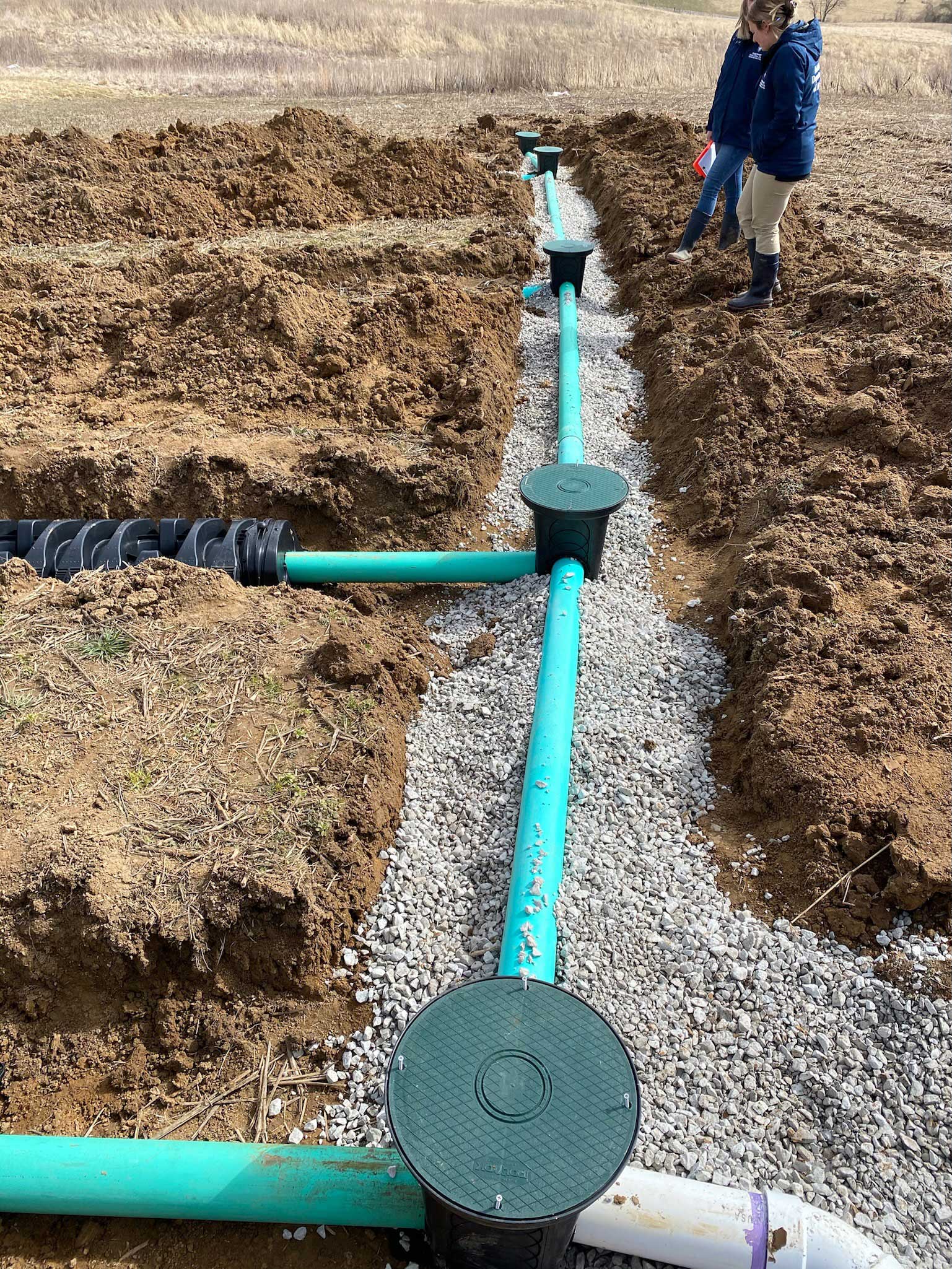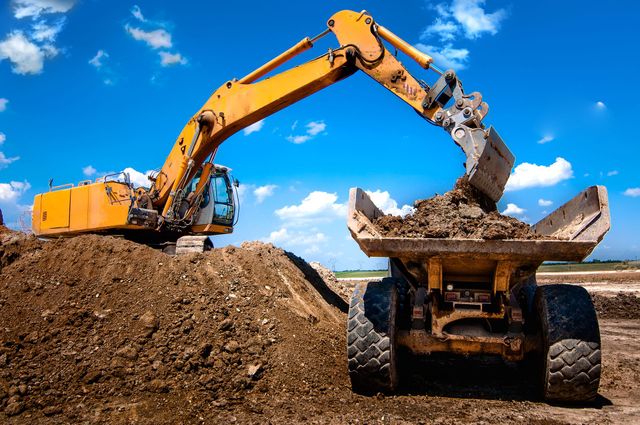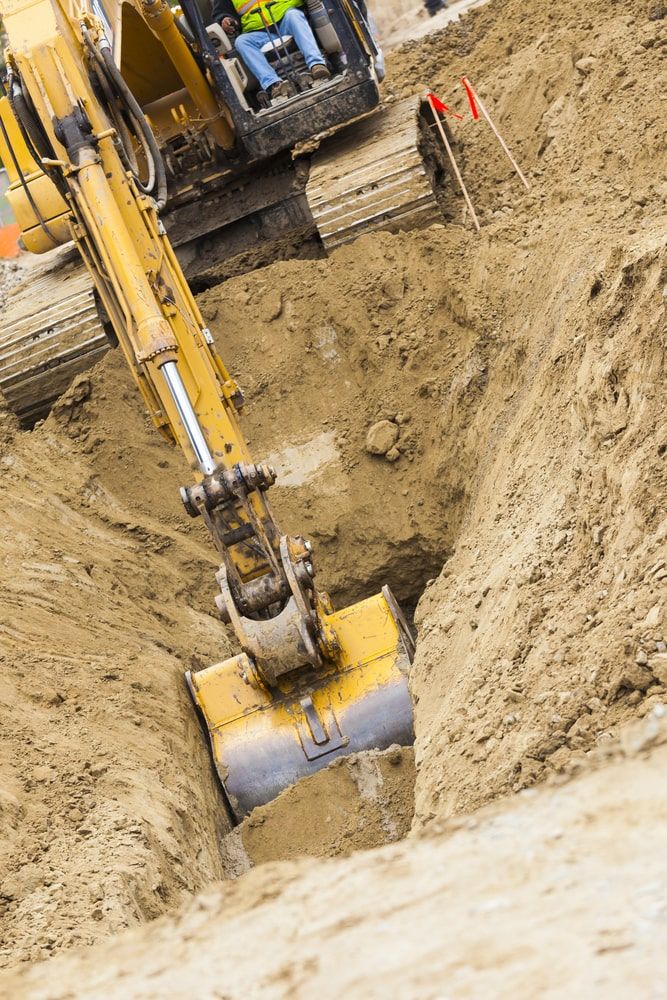Finest Dump Truck Companies in Ohio - Top-Rated Dump Truck Providers
Finest Dump Truck Companies in Ohio - Top-Rated Dump Truck Providers
Blog Article
Thorough Expedition: The Science Behind Superior Excavation Practices
The realm of excavation methods is a domain where scientific research intertwines with craftsmanship to unearth the mysteries concealed underneath the earth's surface. From ancient hand devices to contemporary hydraulic excavators, the development of excavation strategies has actually been a testimony to human resourcefulness and technological advancements. What truly establishes exceptional excavation practices apart is a deep understanding of geological concepts, combined with the application of sophisticated tools and methodologies. By discovering the scientific research behind these practices, we can uncover the tricks that lie below our feet and value the accuracy and know-how that go into every dig.
Evolution of Excavation Techniques
Throughout background, the evolution of excavation methods has actually played a critical function in progressing building practices and historical explorations. From the simple tools made use of by our ancestors to the innovative machinery utilized in modern-day times, the progression of excavation techniques has considerably changed just how we approach different tasks.
In ancient times, manual labor with basic tools such as shovels, pickaxes, and wheelbarrows was the main approach of excavation. This labor-intensive process limited the depth and range of excavations, frequently leading to slow progress and restricted accessibility to particular websites. As worlds advanced, so did the devices and strategies utilized for excavation.
The Industrial Transformation noted a transforming point in excavation experiment the intro of steam-powered equipment. This advancement changed the area, permitting for faster and extra extensive excavations. In modern times, modern technology plays a crucial duty in excavation, with innovations like general practitioner systems, drones, and 3D scanning improving precision and effectiveness in the area. The evolution of excavation methods remains to form the means we develop, discover, and recognize the globe around us.
Duty of Modern Technology in Excavation

The integration of innovative technology has actually essentially revolutionized the area of excavation, improving accuracy and efficiency to extraordinary levels. Among the key technical improvements that has dramatically impacted excavation techniques is the usage of general practitioner systems. These systems permit exact mapping of excavation websites, allowing operators to precisely situate underground energies and frameworks. Furthermore, using telematics in excavation equipment has allowed real-time monitoring of maker performance, causing proactive maintenance and boosted functional productivity.
Furthermore, the introduction of 3D modeling and simulation software application has streamlined the preparation procedure for excavation projects. Engineers and operators can currently picture the entire excavation procedure before beginning, maximizing and recognizing possible obstacles operations. Combined with this, the implementation of drones in excavation activities has actually promoted airborne studies, volumetric dimensions, and website examinations with unmatched rate and precision.
Geological Principles in Excavation
An understanding of geological principles is vital for making sure the architectural honesty and security of excavation sites. Geological variables play a critical duty in figuring out the expediency and safety of excavation projects (excavating ohio). One key geological concept to think about is the kind of soil or rock present at the website. Various dirt kinds, such as gravel, clay, or sand, have varying levels of important source security and need different excavation techniques. For example, natural soils like clay might require added assistance to avoid collapses, while sandy soils might be susceptible to erosion throughout excavation.
By performing comprehensive geological surveys and evaluation, excavators and engineers can develop methods to alleviate threats and ensure the effective conclusion of excavation tasks. Inevitably, integrating geological concepts into excavation practices is important for accomplishing secure, reliable, and lasting outcomes.

Newest Tools for Excavation
In the realm of excavation practices, modern innovations in tools have actually transformed the efficiency and precision of excavation procedures. One of the newest devices making waves in the sector is using drones equipped with innovative imaging technology. These drones can give thorough airborne surveys of excavation websites, using real-time data on topography and potential threats. This details help in better preparation and decision-making during the excavation process.
Another cutting-edge tool acquiring appeal is the execution of 3D printing technology for creating custom-made excavation equipment. This enables the production of specialized devices that are customized to the particular needs of a task, raising efficiency and lowering downtime.
In addition, improvements in materials scientific research have caused the growth of stronger and a lot more durable excavation devices. excavating ohio. Tungsten carbide-tipped excavator add-ons, as an example, offer exceptional efficiency in tough ground conditions, improving productivity on-site
Science's Effect on Excavation Practices

Furthermore, scientific study on dirt mechanics and geotechnical design has actually provided valuable index insights into soil actions, permitting excavation specialists to make educated choices pertaining to excavation approaches and dirt stabilization techniques. In general, scientific research continues to drive technology and improvement in excavation methods, making excavation jobs extra reliable, cost-effective, and sustainable.

Conclusion
Finally, the evolution of excavation strategies has been substantially affected by developments in technology and a much deeper understanding of geological concepts. The most up to date tools and tools used in excavation have improved efficiency and accuracy in the field. The application of clinical understanding has dramatically improved excavation practices, causing extra reliable and sustainable methods for digging deep into numerous kinds of products.
In the realm of excavation practices, contemporary advancements in devices have reinvented the performance and accuracy of excavation procedures. By leveraging clinical concepts, the excavation industry has been able to significantly boost efficiency, accuracy, and security in excavation procedures. GPR enables excavation teams to non-invasively scan and map subsurface frameworks, utilities, and potential hazards, allowing them to prepare excavation tasks with better accuracy and minimized danger of mishaps.
Furthermore, scientific research study on dirt technicians and geotechnical engineering has given beneficial understandings into dirt actions, permitting excavation specialists to make educated decisions pertaining to excavation methods and soil stablizing techniques. On the whole, science continues to drive technology and improvement in excavation methods, making excavation projects extra effective, economical, and lasting.
Report this page